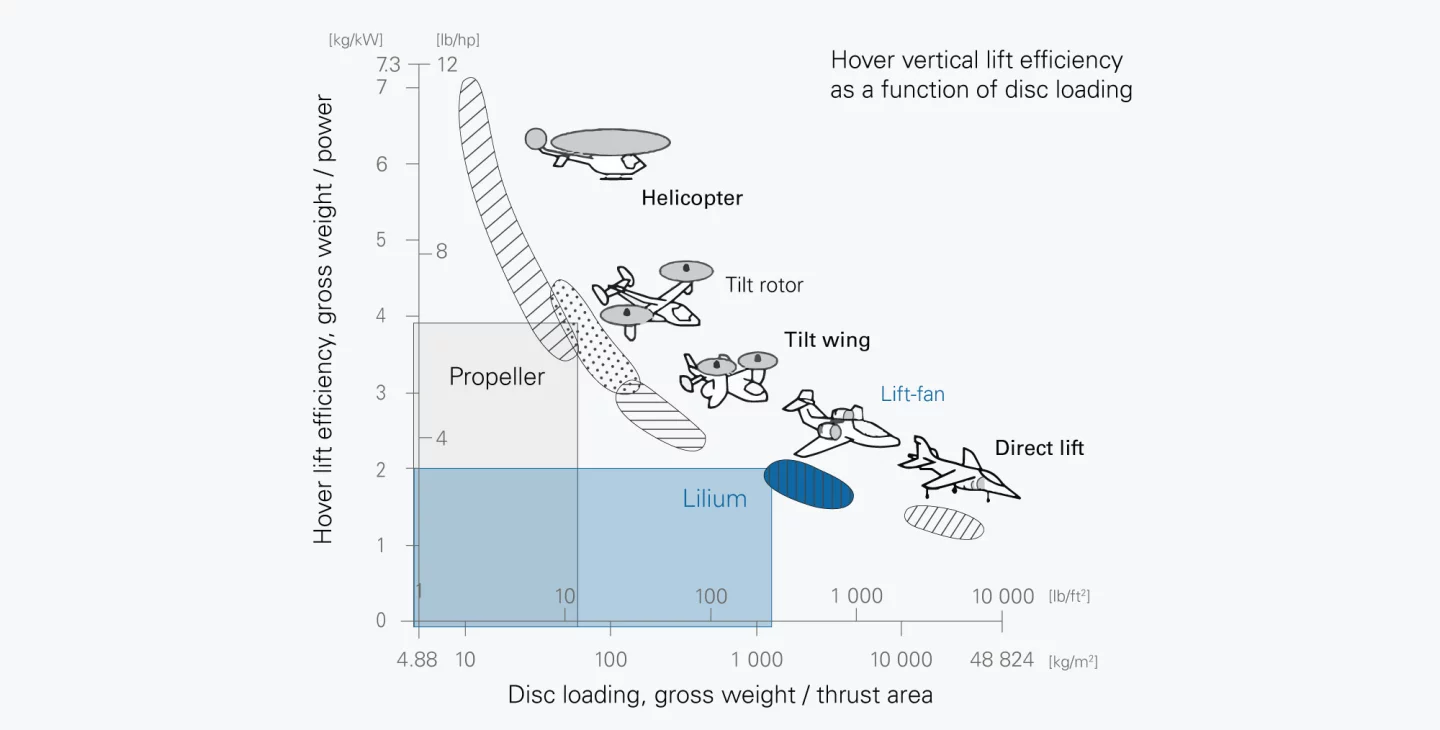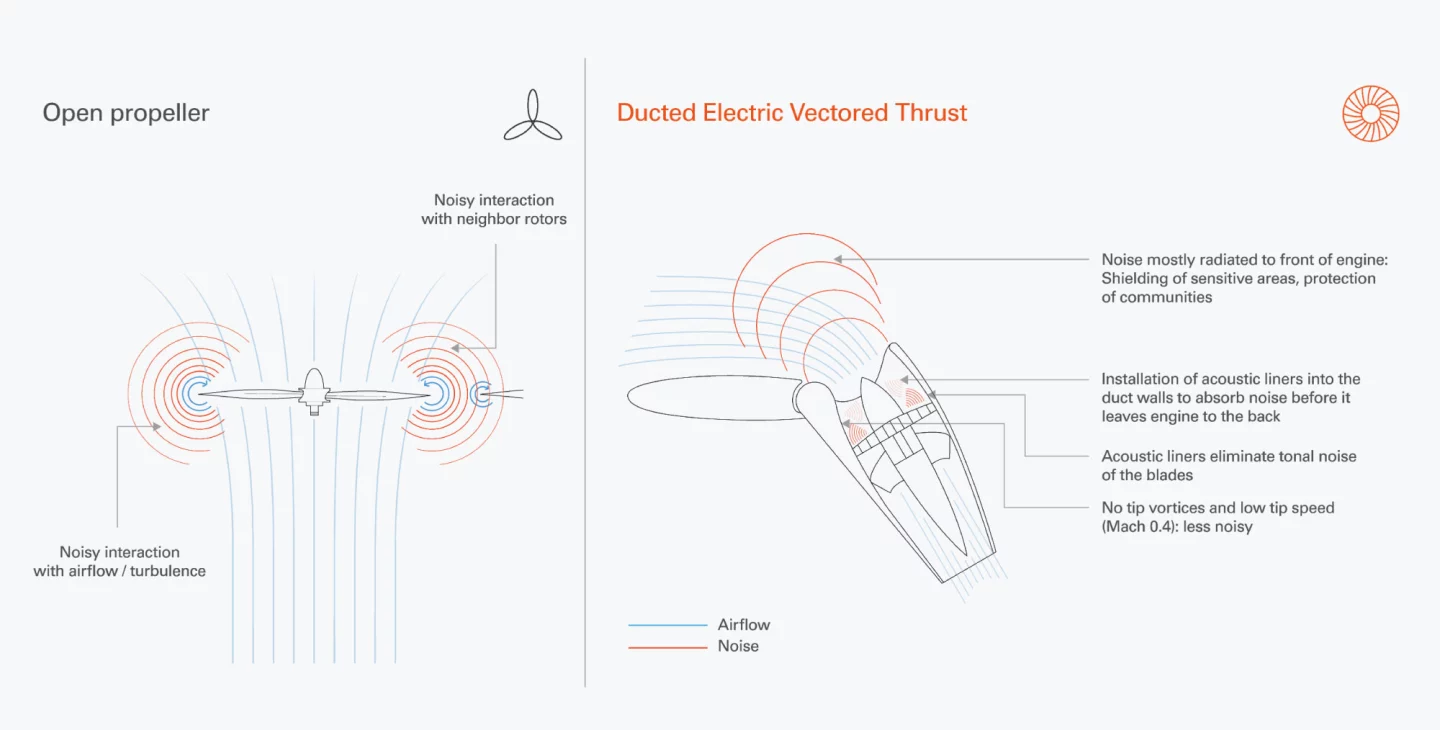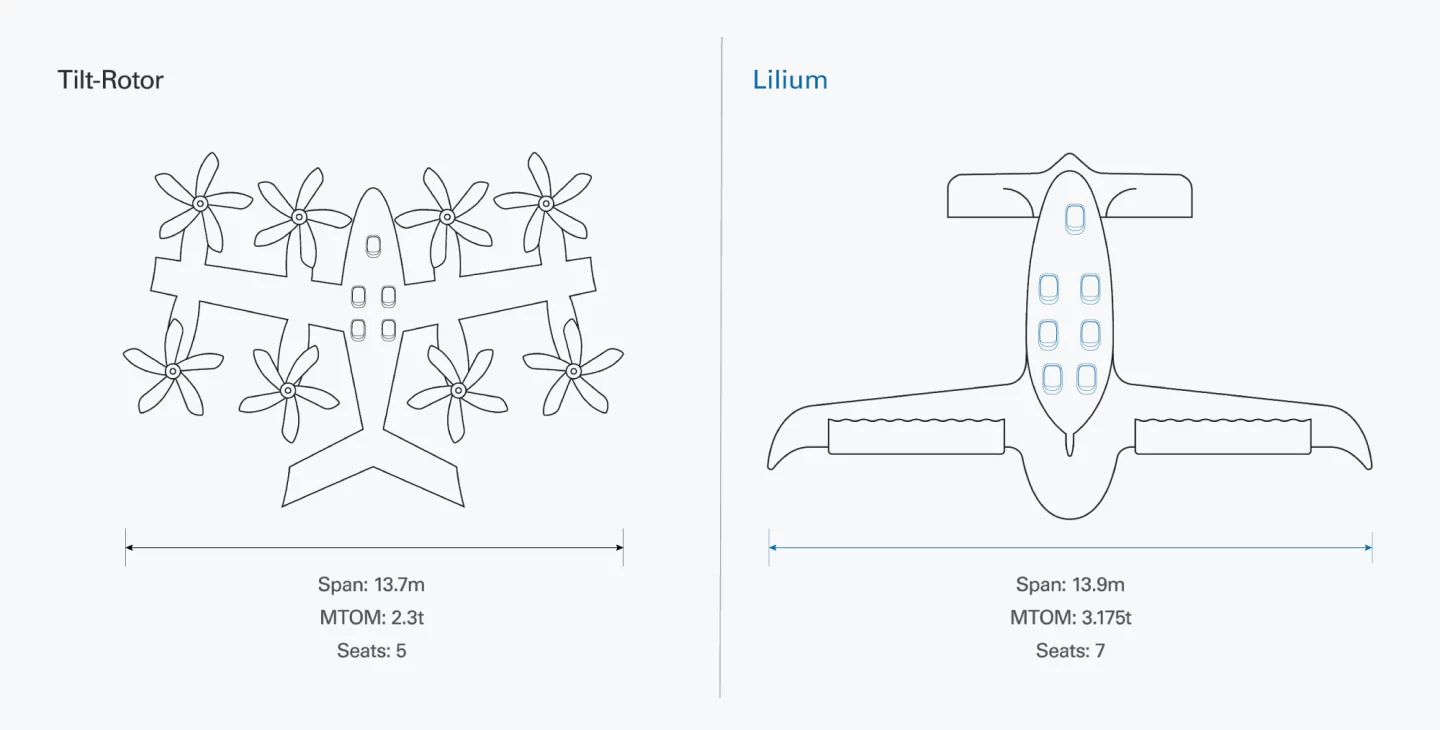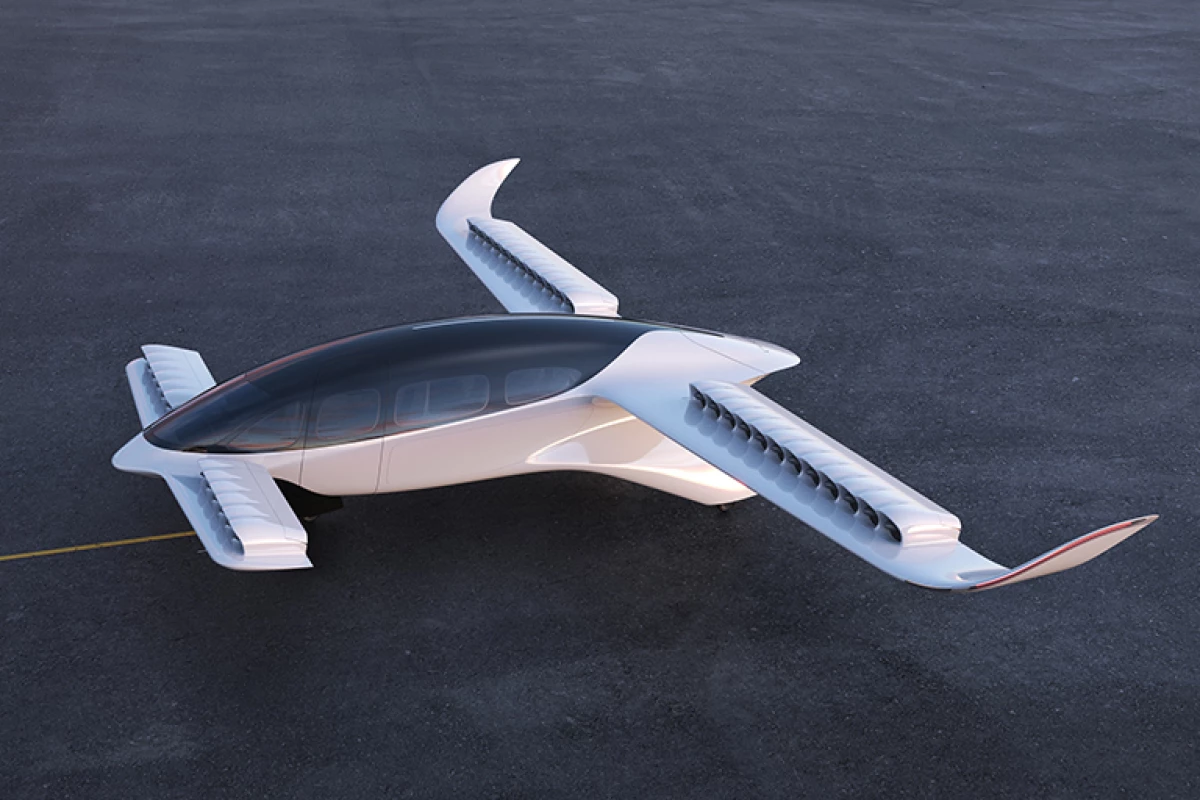Small fans, all things considered, deliver thrust less efficiently than big ones. Lilium might have the best-looking aircraft in the eVTOL game, but it uses 36 tiny fans where competitors use six to eight larger ones, and that's got the odd chin wagging: is Lilium shooting itself in the foot, guaranteeing its aircraft shorter range figures than open-rotor competitors carrying the same amount of battery?
Perhaps not. The company has decided to address these concerns head-on and revealed plenty about Lilium's thinking in the process. We caught up for a Zoom chat with Lilium co-founder and VP of Product Patrick Nathen, and the company's new CTO, Alistair McIntosh, fresh out of his last position as Chief Engineer and Managing Director of Rolls-Royce Germany, to talk about the pros and cons of the small-fan approach.
In a recent blog post, McIntosh points out that yes, the Lilium design, with its small ducted fans and high disc loading (a ratio of overall weight to the area of the rotors), uses twice as much power in a hover than a similar weight design with larger tilting rotors. But after the first 30 seconds of vertical lift and transition, the small fan banks offer low drag in forward flight, where these aircraft will spend most of their time.

Hence, Lilium doesn't talk much about urban air mobility – cross-town air taxi rides – and is much more interested in regional air mobility – inter-city jaunts up to 200 km (124 miles) at launch, with speeds up to 300 km/h (186 mph) and only a minute or so of flight time spent in the vertical lift configuration in which they're at an energy disadvantage. The Jobys and Volocopters can rule the cities; Lilium wants to be your long-distance eVTOL of choice.
"There are plenty of places," says McIntosh, "where the infrastructure, for example high speed train links, is quite simply not as developed as it needs to be to meet the demands of travel. And if you're looking at city-to-city links over a couple of hundred kilometers, we can save a huge amount of investment there. For the amount of money that would go into a high-speed train link, you can have quite a few Lilium jets in operation for a fraction of that cost."
"From all the concepts that are currently being proposed, yes, we would probably have the least disc area out there," says Nathen. "But this is intentionally. Our idea was always to go in this direction of rather small ducted fans with a compact design. The economic benefits that we get from their increased efficiency in cruise flight outweigh the normally perceived disadvantages of smaller fans."

Smaller, acoustically treated rotors like Lilium's are also quieter – up to 10 dB quieter than the open rotor aircraft once acoustic linings are applied, and virtually inaudible in cruise flight. This, and their super-compact packaging, says the company, will allow Lilium to vastly scale up its payload without having to increase the footprint of its aircraft, meaning that this seven-seat design can easily grow to take up to 16 passengers while still landing on a normal helipad and keeping noise down to an acceptable level.
"We're trying to achieve two things," says Nathen, "affordability and accessibility. Accessibility is directly related to inner city operation, for which low noise is critical. These ducted fans we're using will always have less noise. And the second thing that comes directly from that is that by having these smaller ducted fans, we can scale the aircraft to handle different payloads; we can go to an aircraft that gets even bigger, has the same aesthetic appeal, and would be able to transport more people."
"This goes into the affordability goal," he continues. "You nailed it on the head when you called our seven-seater an air minibus. When you can distribute the cost across more passengers, you can make it more affordable. We can scale this design to take 10, even 16 people, without increasing the wingspan significantly, or even at all, just by increasing the length of the aircraft, so we can still land on a helipad. Same infrastructure, same low footprint, more passengers, lower costs. This is what we developed this aircraft for."

McIntosh says this simply can't be done with larger open-rotor eVTOLs; they'd either get too big or too loud to work with urban heliports. "If you want to grow in takeoff weight with an open rotor design, the only way to do that and keep your noise down is to grow your propeller diameters. You can't increase the speed too much without running into noise issues, so to increase lift you need to increase diameters. If you've got six propellers or 10, whatever you arrangement is, you've got less physical space to package propellers next to each other. So as you grow the size of your payload, your physical size becomes bigger. "
"But with smaller diameter ducted fans," he says, "you can set your configuration in a much more compact manner, and you've also got scope to run them faster, because all the noise attenuation systems that come with a duct are more tuneable. You can keep an overall compact size, but increase the overall capability. "
I raise the point that Joby's open-rotor prototype certainly doesn't seem loud – at least not in its impressive promotional videos – but the Lilium team won't be drawn into commenting on a competitor, the Joby video was shot with nobody in the cabin, and the point stands: the open rotor designs will probably be fine for carrying two to five people around, but they might need some serious reworking if they want to get more seats into the cabin, or take heavier cargo loads.

It's certainly an interesting insight into Lilium's technology approach, and it makes one thing clear: there will be room for a lot of different ideas when eVTOLs finally begin taking to the skies. Lilium's big-cabin, small-fan angle might burn battery faster in short cross-town hops, but if it performs better overall on longer cross-country jaunts, this could end up being the perfect aircraft for post-pandemic tree-changers to make high-speed commutes back into the city in. And that could do even more than short-range air taxis to change the shape of our cities in the coming century.
Fascinating stuff. For a deeper look at the technology, check out Alistair McIntosh's recent blog post.
Source: Lilium











